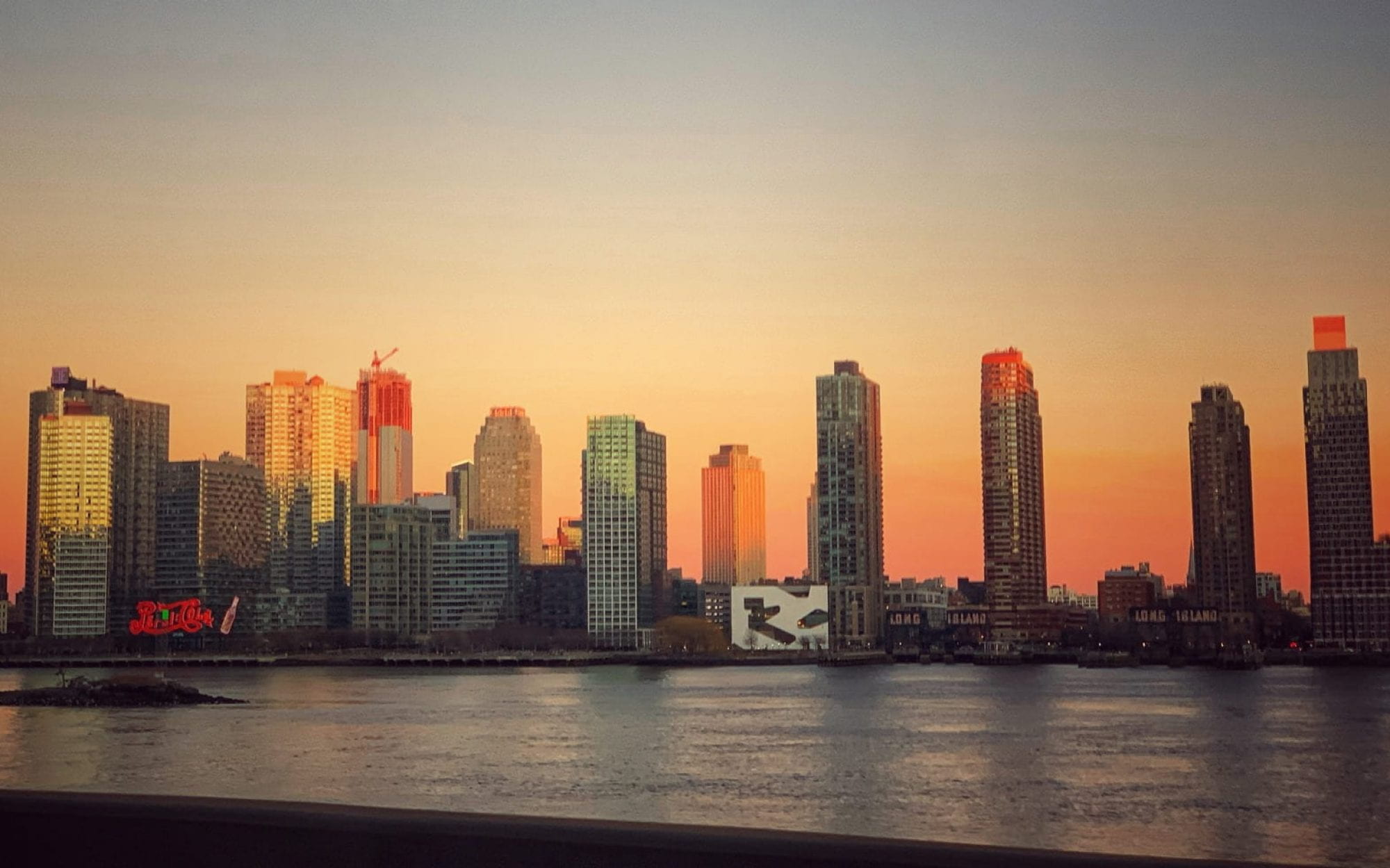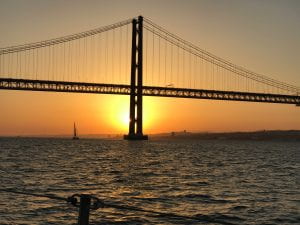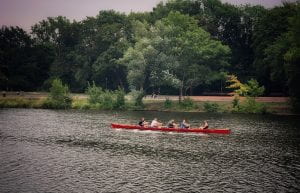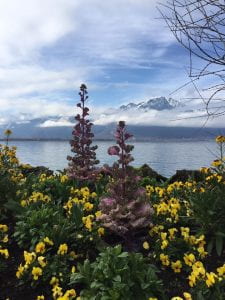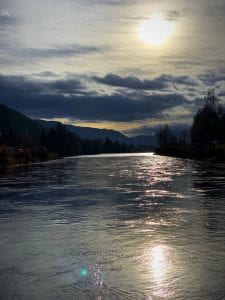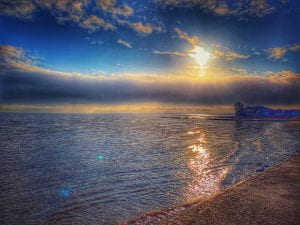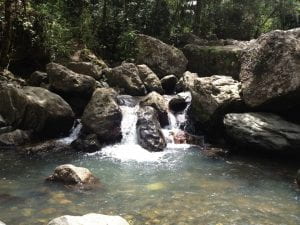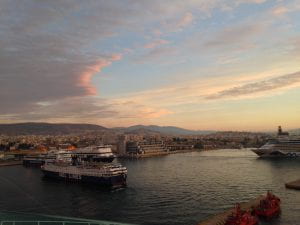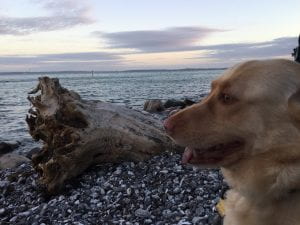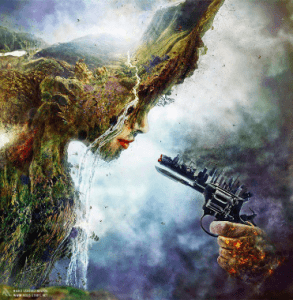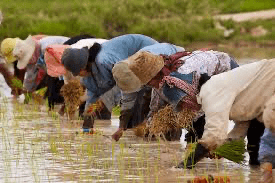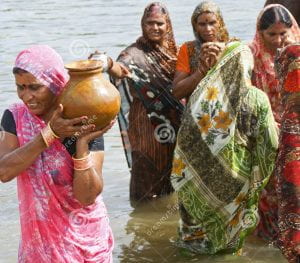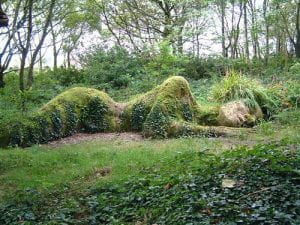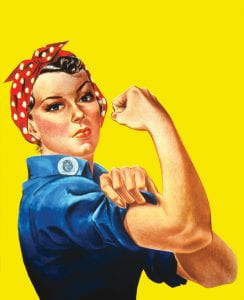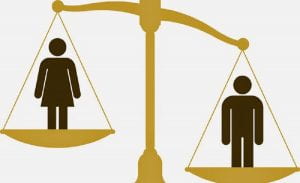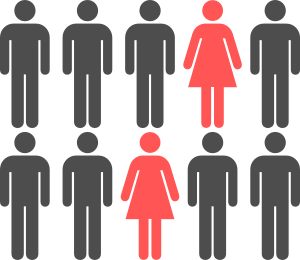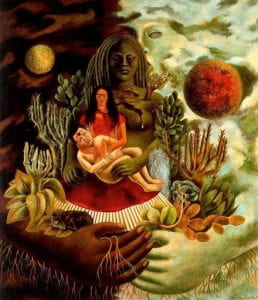Vegetarian Ecofeminism.

This image to me represents a human’s relationship to meat. I see what could be a male like figure, but that is unclear. This figure has a knife inserted into the meat as if it had killed the animal itself. It shows domination over a piece of flesh that it is about to consume. The image of the meat is sterile. It does not correlate to an animal or body part. It appears like just a thing on a cutting board. Perhaps the meat industry would prefer that we see meat in this way. Emotionless, faceless and non bloody? I’m sure animal rights activists would prefer we see images of animal cruelty when we are about to consume meat products. This character is faceless and emotionless as well. Maybe the professor wants us to see that the sterile meat and emotionless figure is how we see our meat. As not being an animal, but just as food that we consume.
As part of this weeks reading material, there was an article in Huffpost.com titled Meat Heads, by Zoe Eisenberg. The article mentions the relationship between food and the differences between men and women. In the media and in Western society we see time and time again a man chowing down on a rare or bloody piece of beef and a woman politely eating a salad or a plate of greens. This image plays into the stereotype that men need meat to build strong muscles and women are too ladylike or feminine to eat a “manly” piece of steak. It’s not often we see a man ordering a salad or something without meat in films or commercials. It further perpetuates the idea we already have about men eating the way they wish to and women carrying the burden of watching their “waistlines” to avoid gaining weight and becoming unattractive to men. “ In western society everything comes down to marketing. The idea that the bloodier the steak, the more manly the man is backed by the entertainment industry” (Ayinde Howell, vegan blogger iEatGrass.com).
In order to change these societal stereotypes of men and meat, we should focus on more men especially athletes who are vegan or vegetarian. There are several top athletes who have elected to follow either a vegan or vegetarian lifestyle. Olympic medalist, track star, Carl Lewis is a vegetarian. While Colin Kaepernick, former quarterback for the 49ers is a vegan. These men are what society would consider “manly” men who have ditched the beef for carrots and broccoli.
In western countries, we are becoming more and more aware of the antibiotics, steroids, and hormones that the meat industry injects into our meat supply. Still our society elects to turn a blind eye and to follow keto diets, and feast on giant steaks. “Steroids are considered dangerous to athletes, but animals that have been genetically engineered and chemically induced to grow faster are considered a different issue” (Curtin).
America is very diverse when it comes to restaurants and eating out. There is really no reason that people in the United States need to stick to a meat heavy diet. There are so many restaurants that offer vegetarian and vegan options these days.
Gendered food
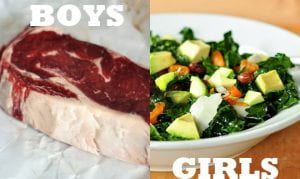 Gendered foods is a socially constructed idea that has been fed to us through the media for years. Women are expected according to society to be more dainty eaters. We continuously see how movies portray women on dates where they order just a salad, while the man orders meat. Here is a good example of a film perpetuating this stereotype of gendered food. https://youtu.be/gc_5tx7xRlg. It shows the woman ordering soup, salad and fish as her entree. The man then asks for information about the old 96er, a giant 96 oz. steak.
Gendered foods is a socially constructed idea that has been fed to us through the media for years. Women are expected according to society to be more dainty eaters. We continuously see how movies portray women on dates where they order just a salad, while the man orders meat. Here is a good example of a film perpetuating this stereotype of gendered food. https://youtu.be/gc_5tx7xRlg. It shows the woman ordering soup, salad and fish as her entree. The man then asks for information about the old 96er, a giant 96 oz. steak.
In the essay written by Deane Curtin, Contextual Moral Vegetarianism, Curtin writes that “women are often associated with vegetables and passivity, ladies luncheons offer dainty sandwiches with no red meat.” I can’t tell you how many times I’ve been at a women’s event where the offer is a vegetable platter, a fruit plate and finger sandwiches made with tuna fish or egg salad.
Ecofeminist perspective on non-human animals.
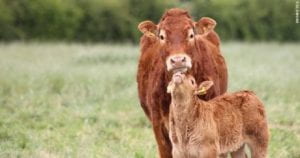 In the essay written by Greta Gaard, she informs us about the ecofeminist belief regarding non-human animals. She believes that even in the relationship between humans and domestic pets, that we humans are oppressors. “ To be a pet is to have all of life’s decisions controlled by someone else; when and what to eat, how to act, whom to socialize with, whether or not to reproduce. If the situation were offered to humans, we’d call it slavery”(Gaard).
In the essay written by Greta Gaard, she informs us about the ecofeminist belief regarding non-human animals. She believes that even in the relationship between humans and domestic pets, that we humans are oppressors. “ To be a pet is to have all of life’s decisions controlled by someone else; when and what to eat, how to act, whom to socialize with, whether or not to reproduce. If the situation were offered to humans, we’d call it slavery”(Gaard).
As much as I agree that humans do oppress animals. I don’t know that I necessarily agree with Gaard’s perspective of the domestic pet/human relationship. Think for a moment about human babies, it’s much the same if you look at it. We are in complete control of our infants, and up until those infants grow into the appropriate age to be safely afforded freedoms of their own. We make all of the decisions for our children, just as Gaard describes how we do with our pets. We decide when and what our babies and young children eat. We choose their clothes, their toys, their bed times, their schools, even with whom they go on play dates. Until they are able to form their own friendships, we choose their friends. We certainly wouldn’t allow our two year old to run free out in the street simply because he asked. Neither would we allow our beloved pets to run free in the streets for the same fears, that they may become injured or killed. Gaard conveys the importance of providing the best life we can for our domestic pets, and I completely agree. Just like a human baby, our pets didn’t choose to come live in our homes. We made the choice, as such it’s our responsibility to provide the best home and environment possible.
Ecofeminist approach to non-human animal companions 
I accept my complicity in a system of inter species domination, that was created when man domesticated animals for his own pleasure. I serve as an ally to the animals to whom I’ve committed my life. I provide them with love, compassion, quality food, clean water and clean bedding. Gaard advocated for the bird in the video/pizzeria in a similar way. I believe this is an ecofeminist position on the relationship between non-human domestic animals and humans.
I do agree that once upon a time we made the decision to domesticate animals, and as a result we have a relationship with animals wherein they are completely reliant upon us for their survival. So, it is up to us and to ecofeminist to educate people on the proper care of animals. As far as non domestic animals such as those the meat and dairy industry see as food sources, I agree that the treatment of those animals is atrocious. While I’m not a vegan or vegetarian, I limit my meat consumption to no more than three times per week. I have fish one day and usually a form of poultry. However I do eat eggs and cheese. I try to buy responsibly, by buying bio (organic) meat, cheese and egg options. The bio market near my house offers cruelty free options of meat and eggs. Their suppliers are local farmers nearby, where chickens are free range and grass fed.
According to the essay written by Deane Curtin,“there’s a connection through food between the oppression of women and the oppression of non-human animals. Many western societies view non-human animals as food sources, or as inferior beings, so it’s easier for most to ignore the inhumane treatment of food source animals like pigs, chickens, cows and the like. Curtin talks about moral vegetarianism, an idea that we should try at all costs to avoid abusing or causing the pain and suffering of a sentient being for our own enjoyment or consumption. “For economically well-off people in technologically advanced countries, they have a choice of what food they want to eat”( Curtin). Ecofeminist, vegans, and vegetarians believe that non-human animals should no longer count as food.
How science is stepping in
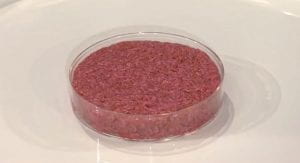 Scientists around the world are working on new meatless options. They are creating meat using animal cells through a process called in vitro cell culture. Could this become the new way we enjoy a burger? This option will certainly upset the meat industry, but it could save lives. I believe that reducing our meat consumption is the best way to protect non-human animals. However, since we will never eliminate meat eaters completely, we can at least lobby for a more humane treatment of food source animals. “Factory farms are responsible for most of the 6 billion animals killed for food every year in the United States. If there were improved regulations, and strictly enforced rules against inhumane treatment of food source animals, these numbers could certainly decrease.
Scientists around the world are working on new meatless options. They are creating meat using animal cells through a process called in vitro cell culture. Could this become the new way we enjoy a burger? This option will certainly upset the meat industry, but it could save lives. I believe that reducing our meat consumption is the best way to protect non-human animals. However, since we will never eliminate meat eaters completely, we can at least lobby for a more humane treatment of food source animals. “Factory farms are responsible for most of the 6 billion animals killed for food every year in the United States. If there were improved regulations, and strictly enforced rules against inhumane treatment of food source animals, these numbers could certainly decrease.
Cultured meat, https://en.m.wikipedia.org/wiki/Cultured_meathttps://en.m.wikipedia.org/wiki/Cultured_meat
Curtin, Deane, Contextual Moral Vegetarianism, spring 1991, http://www.animal-rights-library.com/texts-m/curtin01.htm, Feb. 20,2020
Dawson, Allen, These 19 elite athletes are vegan — here’s what made them switch their diet, 01, No. 2018, https://www.businessinsider.de/international/vegan-athletes-and-why-they-changed-their-diet-11/?r=US&IR=T02/22/2020.
Eisenberg, Zoe, Meat Heads: New Study Focuses on How Meat Consumption Alters Men’s Self-Perceived Levels of Masculinity, Jan.13,2017 HuffPost.com February 21,2020 Article: https://www.huffingtonpost.com/zoe-eisenberg/meat-heads-new-study-focuses_b_8964048.html?ncid=engmodushpmg00000006
Gaard, Greta, Ecofeminism on the Wing, (2001) 19-22 Feb. 21,2020 https://www.academia.edu/2489929/Ecofeminism_on_the_Wing_Perspectives_on_Human-Animal_Relations
Annotated bibliography
Greta Gaard is a writer, associate professor, activist, environmentalist and ecofeminist. She is currently a professor of English in Wisconsin. She works to bring awareness to the association between non-human animals and male domination/female oppression. She is a published author of several ecofeminist publications.
